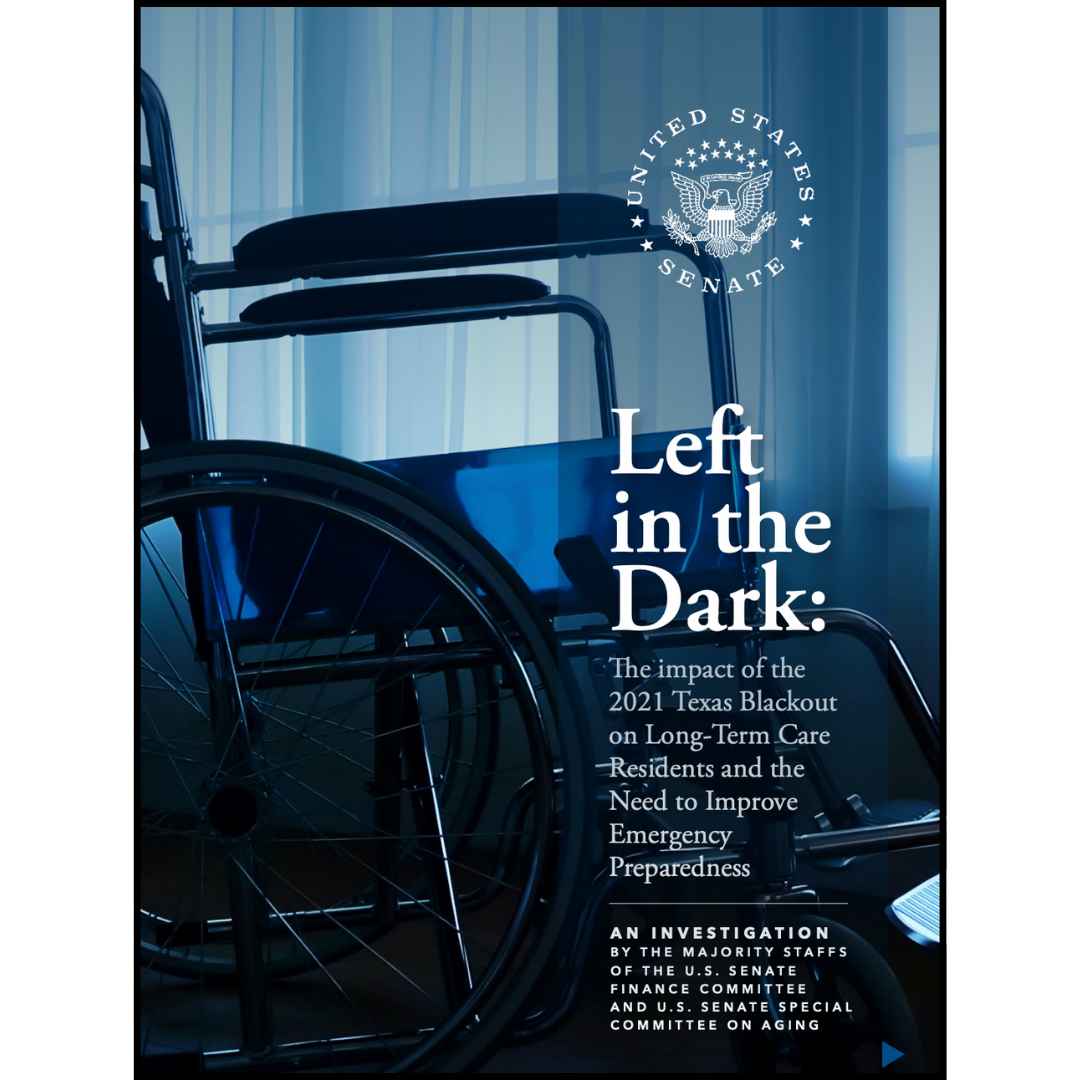How to Improve Emergency Preparedness at Your Senior Care Facility: Lessons From the 2021 Texas Blackout
In February 2021, a statewide blackout in Texas left millions without power during an arctic blast of sub-freezing temperatures. The blackout starkly highlighted the vulnerability of long-term care facilities during such an emergency. In February 2023, the majority staffs of the U.S. Senate Finance Committee and the U.S. Senate Special Committee on Aging released a report titled “Left in the Dark,” which highlights how the blackout impacted Texas care facilities and the important lessons on long-term disaster planning that senior care facilities can learn from.
The Results of the Texas Blackout
 According to the report, more than 500 nursing homes in Texas reported incidents to the State health department. Those incidents included electricity outages, water shortages, and evacuations. Additionally, 600 assisted living facilities reported being affected by the blackout.
According to the report, more than 500 nursing homes in Texas reported incidents to the State health department. Those incidents included electricity outages, water shortages, and evacuations. Additionally, 600 assisted living facilities reported being affected by the blackout.
According to the Texas Ombudsman, 168 long-term care facilities sheltered in place. Those facilities did not have a generator, and they experienced issues including burst pipes, no power, and no transportation to evacuate residents. Temperatures within the facilities dropped into the 50s, and one resident in an Austin facility died of exposure to those cold temperatures within the facility.
The Growing Threat of Extreme Weather
The report highlights the growing frequency of more extreme weather events across the nation. For example, the arctic blast that hit Texas was just one of several similar weather events. In December 2022, another arctic blast again threatened the electricity supply in Texas. Cold temperatures and extreme weather are causing more frequent power outages that last longer and affect more customers.
In 2022, nursing homes in Illinois, Montana, and Kentucky had to evacuate because of flooding. Tornadoes destroyed multiple Kentucky and Arkansas nursing homes in December 2021. The 2018 Tubbs fire destroyed a California living facility. Thousands of Florida nursing home residents were evacuated ahead of Hurricane Ian in September 2022, and Pennsylvania long-term care facilities were evacuated due to flooding in 2020.
Emergency Preparedness in the Long-Term Care Industry
The Texas blackout and the growing frequency of extreme weather events draw attention to the importance of emergency preparedness for long-term care facilities. The Office of Inspector General for the U.S. Department of Health and Human Services (OIG) reviewed how eight state survey agencies oversaw the implementation of new federal rules governing emergency preparedness requirements for nursing homes. The OIG noted that deficiencies occurred because of factors including inadequate managerial oversight, staff turnover, and lack of requirement for mandatory participation in life safety training programs.
As a result of those oversights, the OIG reported that residents, visitors, and staff in the nursing homes “were at an increased risk of injury or death during a fire or other emergency.” The OIG found that 94 nursing homes in eight states related to that inadequacy had deficiencies in their emergency plans. One facility didn’t have an emergency plan in place, while four didn’t update their plans annually. Other inadequacies included not addressing resident population needs, not addressing emergency events, and not coordinating with government emergency management officials.
Among other violations, the OIG also identified 194 violations relating to the types of information required to be maintained in emergency plans. That included lack of clarity on procedures or relocation sites, not addressing how to transfer residents, not addressing sheltering in place, and not addressing how to track staff and residents during and after emergencies.
How to Improve Emergency Preparedness in Long-Term Care
The report concludes with recommendations to improve emergency preparedness in the senior care industry. Recommendations include increasing the transparency of emergency plans, incorporating climate change risks into emergency preparedness, and improving nursing home levels to better equip nursing homes to respond to emergencies.
The report also supports the full implementation of the 18 recommendations made by Sheltering in Danger in 2018. Those recommendations include focusing on key areas like temperature protection for residents, sheltering in place and evacuations, emergency plans, communication plans, and power restoration.
The Texas blackout had devastating results and highlighted the increasing need to improve emergency preparedness in senior care facilities. Given the growing frequency and severity of extreme weather, it’s essential that senior care facilities develop, revisit, and continually improve their emergency plans.

Paige Cerulli is a contributing writer to i Advance Senior Care.
Related Articles
Topics: Disaster Preparedness , Facility management , Featured Articles , Operations , Risk Management











